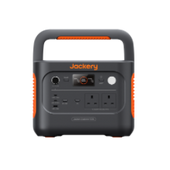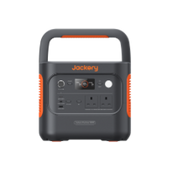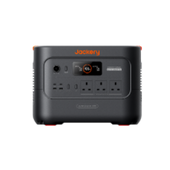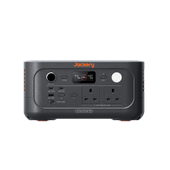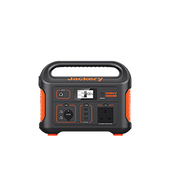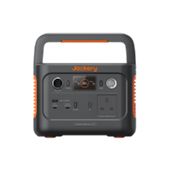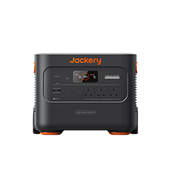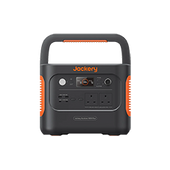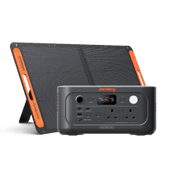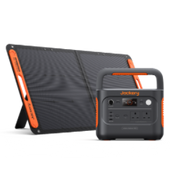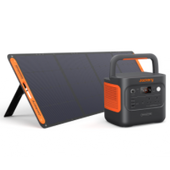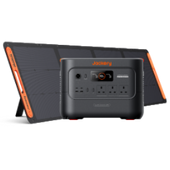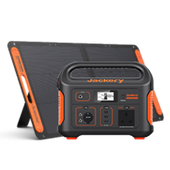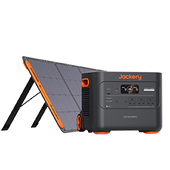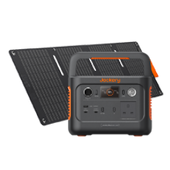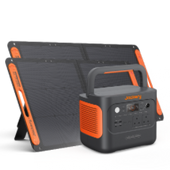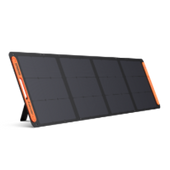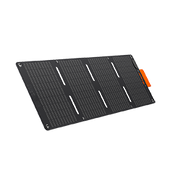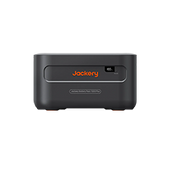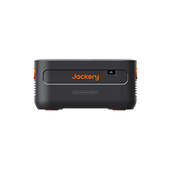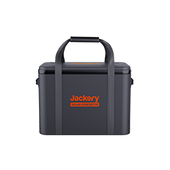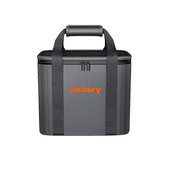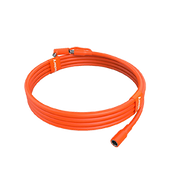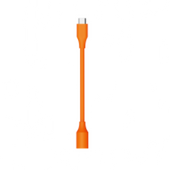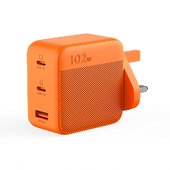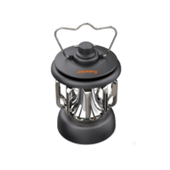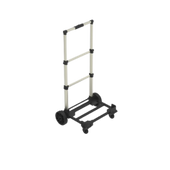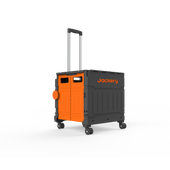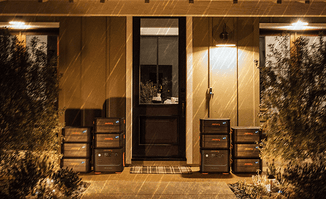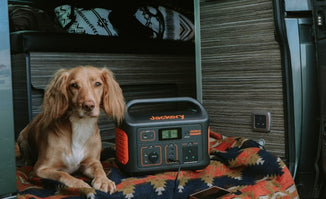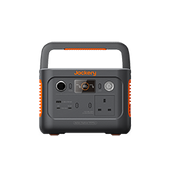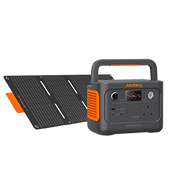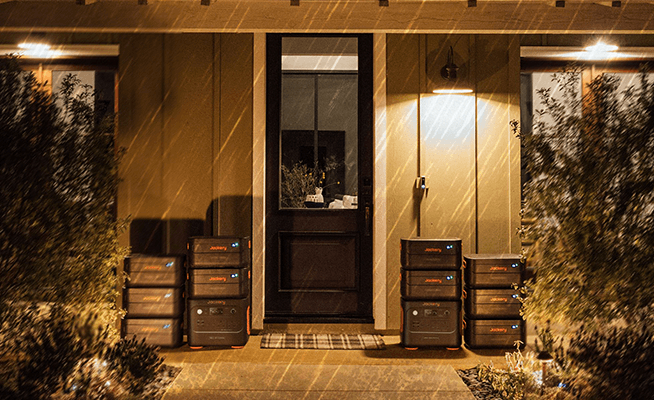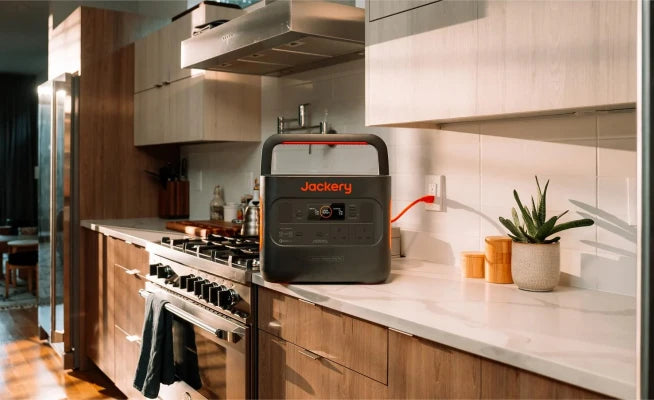Ultimate Guide to Solar Farms: How Do Solar Farms Work
Solar panels are the latest cash crop to appear on farmland. Indeed, solar farms of all sizes are increasing across the United Kingdom, from small ones illuminating local communities to enormous utility-scale solar farms that power thousands of residences.

Over the last decade, solar has grown at an average 48% yearly rate. This development is mainly attributable to the increasing number of solar farms throughout the United Kingdom and the boom.
This comprehensive guide to solar farms explains everything you need to know, including what they are, their pros and cons, the various types, how they work, and the best alternative to solar farms. Today, there is sufficient solar energy on the grid. Jackery Solar Generators combine Jackery Solar Panels and Portable Power Stations to maximize the use of solar energy for your farming or rural living.
|
Products |
Capacity |
Output |
Cell |
Cycle Life |
|
2-12kWh |
3000W |
LFP (LiFePO4 battery) |
4000 cycles to 70%+ capacity |
|
|
2160Wh |
2200W |
Lithium-ion Battery |
1000 cycles to 80%+ capacity |
What Is A Solar Farm?
A solar farm is a massive collection of solar panels that transfer sunlight into usable electricity and send it into the power grid.
Solar farms, also known as photovoltaic power stations or solar parks, are typically mounted on the ground rather than rooftops and come in various sizes and shapes.
If you are familiar with solar panels, you might guess that a solar farm is an extensive collection of solar panels. Solar farms are used to collect solar energy. As a renewable energy source, they have the potential to reduce emissions by helping to replace fossil fuels in our energy-intensive civilization.
Solar farms are an integral component of the more extensive fleet of renewable energy sources we will rely on in the future. Solar farms and other solar panels produce enough energy to power 15.7 million American households. (Source: National Renewable Energy Report)
What Are The Pros & Cons of Solar Farms?
A solar panel farm is a land-based concentration of solar arrays that can be used as an alternative to the local electricity grid. These are the advantages and disadvantages of a solar farm.
The Pros of Solar Farms
Several benefits are associated with solar projects, including the ability to remain powered even if the local power grid fails and the ability for large groups of people to access power in underserved areas.
Self-Sufficient Power: One of the advantages of a solar panel system is that energy from solar panels continues to travel to structures connected to a solar panel system even when the power goes out for networks connected to the power grid.
If the electricity grid goes down, anyone hooked up to a solar panel system or solar farm will still have power, especially during the day when panels are exposed to sunlight. For instance, the Jackery Solar Generator is a portable solar system that absorbs sunlight during the day and stores it in a portable power station for use at night.
Solar Energy Generation: A solar farm benefits a larger population than a solar panel system on a single residence. A community can subscribe to solar power by engaging in a solar land lease agreement to take advantage of solar arrays in the area.
Usable: The construction of a solar panel farm can transform unimproved land or a farm under construction into something usable, enhancing the economic situation of an entire community.
Local Environment Benefits: The farms may have animals, such as sheep, grazing between grids of solar panels, which promotes biodiversity by allowing small animals access to land that would otherwise be fenced off.
The net effect is that cleaner electricity is introduced to the grid, reducing the customer's carbon footprint despite increased electricity consumption. Greenhouse gas reductions are possible when consumers have a more significant role in power generation.
The Cons of Solar Farms
Although there are numerous advantages to constructing a solar farm in your community, there are also obvious disadvantages:
Higher Costs: Storage media, such as batteries, store captured energy until required. In addition, the necessary technology is expensive. When the sun is brightest at midday, most energy is consumed to offset this cost.
Weather Conditions: Clouds interfere with everything, including the twilight. This lack of constant access makes increasing solar energy dependence problematic. Other renewable sources, such as wind energy, are irregular, but even more so. It is a calming reality when evaluating the pros and cons of the solar farm.
Limited Raw Materials: These are specific materials used to manufacture solar panels. In addition, they are limited, and the use of rare earth minerals is questionable, even if the objectives are not disputed.
What Are The Types of Solar Farms?
The thousands of solar panels used in the United Kingdom can be categorized into two sizes of solar farms. There are utility-scale solar farms, community solar farms, and portable solar farming systems. Although utility-scale solar farms are typically much more extensive than other solar farms, customer participation is the primary distinction.
Utility-Scale Solar Farm
Utility-scale solar farms are large enough to supplant an entire region's electric utility. These large-scale solar farms contain hundreds of thousands of solar modules and can provide electricity to thousands of residences.
Utility-scale solar farms have greater locational flexibility than smaller farms. Large, sun-drenched, flat, transmission-line-proximate areas are ideal for utility solar arrays.
Solar electricity can then be purchased or leased by homeowners, businesses, non-profit organizations, etc. Community-scale solar farms can be constructed in regions of the electric grid where they may be most advantageous.
Community Solar Farm
A community solar farm is a minor installation that serves a local area. Community solar farms are often owned and operated by smaller, regional utilities such as municipally-run or cooperative utilities, as opposed to more extensive, investor-owned solar panel farms.
With community solar farms, residents can subscribe to the solar farm utility while remaining connected to the power infrastructure and save money by utilizing electricity that may be less expensive than that provided by traditional utilities.
As a result of receiving solar energy to supplement their energy consumption from the power grid, participants in community solar farm agreements will see their electric bills change.
Here’s how community solar farms work:
The solar panels are installed in a large, open community area with maximum sunlight exposure.
The solar energy is fed into the regional electricity grid.
People who participate in the solar program will have their energy bill adjusted based on the quantity of energy generated relative to the size of their home.
It is feasible thanks to a technological innovation known as "virtual net metering." Your retail energy provider will credit your bill for the proportional quantity of electricity your community solar farm generates to your home's energy consumption.
Portable Solar System for Farm
As the term "Portable" suggests, the components of these solar systems are compact. The portable solar systems are simple to install and transportable. Like a standard solar panel, portable solar panels use a solar power generator to turn solar energy into usable electricity. Then, you can generate solar energy successfully. They are simple to store and convey.
Using portable solar systems also contributes to the enhancement of economic benefits. When you rely on mobile solar systems, you can significantly reduce your energy expenses and provide a free, renewable source of electricity.
Instead of conventional generators, a portable solar system is a reliable power source for agricultural work and livestock. Jackery Solar Generators are portable solar power systems that can help power your farm's larger-capacity working tools.
However, compared to utility-scale and community solar farms, the portable solar system is the weakest solution for your farm, so you can only use it in certain circumstances, though it is still helpful to some extent.
|
Solar Farms |
Pros |
Cons |
|
Utility-Scale Solar Farm |
Largest-size system Suitable for large groups of farms and lands Efficient Power independence |
Costly Need enough spaces Need more materials Need professional installation |
|
Community Solar Farm |
Medium-size system Suitable for community Combine grid power |
Pricey Need enough spaces Need professional installation |
|
Portable Solar System for Farm |
Portability Solar system with a grid utility Easy to use Simple to install Cheap Popular |
Lower capacity, but enough for powering essential appliances |
How Do Solar Farms Work?
Unlike solar panels installed on rooftops, solar farms can be constructed away from shade and moved so that they are always at the optimal angle to collect solar radiation throughout the day and year.
The required land area will vary depending on the scale of the solar farm, whether it is necessary to produce 50 kW, 50 MW, or more. A modest solar farm may require only a few acres of land, whereas a sizeable solar farm may require hundreds of acres.
The location of the land is also crucial to the operation of the solar farm. It must be sufficiently near power lines and electrical panels to connect to the power grid or a central power source.
Batteries are not used to store the energy generated by solar panels. Instead, the energy is fed through an inverter and into the public power grid after being gathered by solar panels.
How does a portable solar system compare to utility-scale and community solar farms operating on the same principle? How does a mobile solar system for agriculture work? Please keep reading to learn more about how a portable solar system works.
How Does A Jackery Portable Solar Generator Work
Jackery is the premier manufacturer of solar products, such as solar panels, portable power stations, and solar generators.

Jackery Solar Generators are the most effective portable solar systems for farming and pastoral living. Jackery solar generators have a capacity of over 12 kWh, making it simple to charge all electric agricultural tools and equipment.
Typically, Jackery Solar Panels convert sunlight to electricity. The solar connector and cables permit the connection of solar panels to Jackery Portable Power Stations for optimal energy storage and utilization. You can load your portable power stations with solar energy using solar panels.
Jackery Solar Panels can be connected series or parallel with power stations from other manufacturers. Solar panels, AC receptacles, and carports can all be utilized to recharge portable power stations. Due to the pass-through feature, you can simultaneously power appliances and the mobile power station itself.
What Size of Solar Generator Needed for Farming?
The Jackery Solar Generator is famous for its high output, portability, and versatility. Choose between 240Wh and 12kWh based on your farming power requirements.
Before purchasing a solar generator, it's a good idea to calculate the amount of electricity you'll need while farming. You can use this formula to calculate the length of time the Jackery Solar Generator will continue to operate for farming purposes.
Working Time = Power Station Capacity*0.85 / Your Device's Operating Wattage
For example, charging an 800W barn cleaner for farming with the Solar Generator 2000 Pro (2160Wh capacity) will work over 2 hours (2160Wh*0.85/800W).
Jackery Solar Generator 2000 Plus
The Jackery Explorer 2000 Plus Portable Power Station has an expandable capacity of 2 kWh to 12 kWh. Adding additional battery cells can increase the capacity to a whopping 12 kWh. Using our plug-and-play solar panels, you can generate energy on the move or your property. Ideal for rural living and fueling essentials during prolonged power outages.

You can use six SolarSaga 200W solar panels to recharge Explorer 2000 Plus in two hours. The power source becomes self-sufficient by recharging itself with solar energy instead of the power grid. The first industry-wide add-on battery cell can be charged by solar panels, allowing for greater recharge flexibility and energy savings.
The Explorer 2000 Plus is expandable to 12 kWh per unit. Even with daily use, the superior LiFePO4 battery has a lifespan of up to ten years due to its durability. In addition to supporting multiple devices, real-time status monitoring, and configurable parameters, it ensures a safe and reliable charging experience.
|
|
Capacity |
Output Ports |
Farming Devices |
Working Hours |
|
Solar Generator 2000 Plus |
2-12 kWh |
4*AC Output: 120V~ 60Hz, 20A Max, AC; 1*AC Output: 120V~ 60Hz, 25A Max, AC Total Output,3000W Max, 6000W surge peak; 2*USB-A: Quick Charge 3.0, 18W Max; 2*USB-C: 100W Max, (5V, 9V, 12V, 15V, 20V up to 5A); 1*Carport: 12V⎓10A |
Barn Cleaner: 800W Barn Lighting: 40W Diary Water Heater: 3000W Electric Fence: 30W Grain Grinder: 600W Water Pump: 150W |
Barn Cleaner: 2.2H Barn Lighting: 43.2H Diary Water Heater: 0.6H Electric Fence: 57.6H Grain Grinder: 2.9H Water Pump: 11.5H |
*Learn more details from our product page.
Jackery Solar Generator 2000 Pro
The Solar Generator 2000 Pro has a power capacity of 2,160Wh and can be entirely charged in under 2.5 hours with 6*SolarSaga 200W solar panels or an AC wall receptacle in less than 2 hours. The Explorer 2000 Pro battery has its own MPPT controller with an efficiency of 97% for solar charging conversion. In addition, it employs a pure sine wave inverter, which is superior for your equipment.

A single button press grants limitless access to power. Pass-through charging is supported by the Explorer 2000 Pro portable power station, allowing you to charge your power station while essential devices remain plugged in, allowing you to charge on the go swiftly and conveniently.
The collapsible handle on the 43-pound (19.5-kilogram) power station facilitates portability. Customers who purchase Explorer 2000 pro from us receive a 3-year and an additional 2-year warranty if they register their information on the Jackery website. It can be used securely in farming.
|
|
Capacity |
Output Ports |
Farming Devices |
Working Hours |
|
Solar Generator 2000 Pro |
2016Wh |
3*AC Output: 120V, 60Hz, 2,200W (4,400W Peak); 2*USB-A: Quick Charge 3.0, 18W Max; 2*USB-C: 100W Max, (5V, 9V, 12V, 15V, 20V up to 5A); 1*Carport: 12V⎓10A |
Barn Cleaner: 800W Barn Lighting: 40W Diary Water Heater: 3000W Electric Fence: 30W Grain Grinder: 600W Water Pump: 150W |
Barn Cleaner: 2H Barn Lighting: 40.8H Diary Water Heater: 0.5H Electric Fence: 54.5H Grain Grinder: 2.7H Water Pump: 10.9H |
*Learn more details from our product page.
How to Build A Solar Farm?
The first requirement for constructing a solar farm is land - quite a deal of ground. PV power plants require more space than most other types of power plants. They need space for the solar panels, additional equipment such as inverters, and maintenance access to the equipment.
A minimum of 100 square feet per kilowatt (kW) is often needed just for the panels. Including space for other equipment, an access road, and setbacks, a solar farm may require between 5 and 10 acres per megawatt. (Source: National Renewable Energy Report)
Not just any parcel of land will suffice. It must be close enough to power lines and electric substations to connect to the power infrastructure. It must be level, free of debris, and not prone to inundation. Local zoning regulations must permit this use of the property. Additionally, it must receive ample sunlight.

(Source: Perch Energy)
Most solar farms are located on private property. However, certification from various state and local government agencies is required. Developers must submit detailed construction plans and environmental impact studies to demonstrate that their endeavor will not harm the environment. The approval procedure, siting, and permitting can take three to five years. However, once the proposal is approved, construction can begin within a few months.
How Long Does A Solar Farm Last?
After approximately 25 years, solar panels degrade and lose efficiency. Nevertheless, a solar farm can operate for 30 to 40 years at reduced efficiency. The land can then be released as a solar farm with new panels or returned to its original use.
The lifespan of solar farms is shorter than that of other forms of power plants. Coal and gas facilities can operate for approximately 50 years, nuclear reactors for up to 80 years, and micro hydropower systems for 50 to 100 years. (Source: National Renewable Energy Report)
Final Thoughts
Our country must immediately supplant fossil fuels with clean, renewable energy to prevent catastrophic climate change, indicating that solar farms will become a more significant part of the landscape.
From this page, you will learn what solar farms are, how solar farms work, and the types of solar farms. The portable solar system is the most convenient option to power your farming tools. Jackery Solar Generators combine solar panels with power stations, allowing you to choose from numerous power capacities based on your needs.



